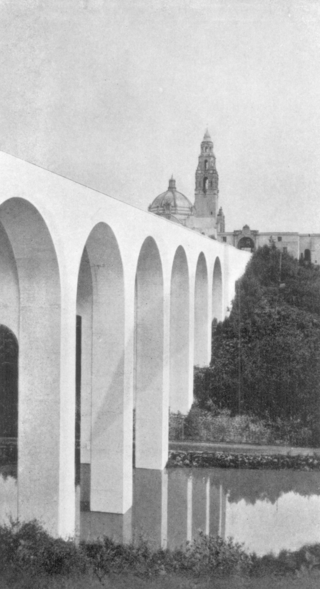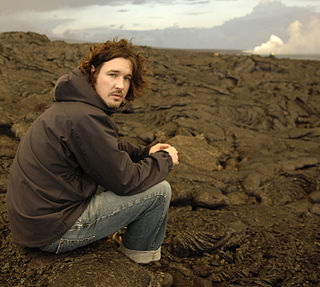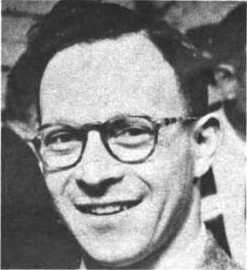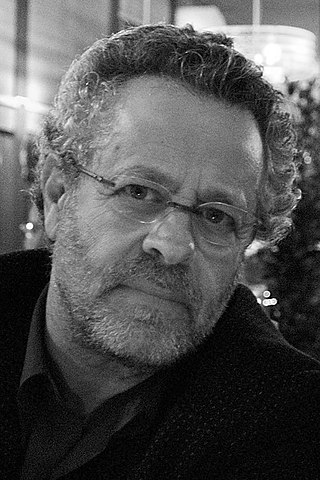
The Panama–California Exposition was a world exposition held in San Diego, California, between January 1, 1915, and January 1, 1917. The exposition celebrated the opening of the Panama Canal, and was meant to tout San Diego as the first United States port of call for ships traveling north after passing westward through the canal. The fair was held in San Diego's large urban Balboa Park. The park held a second Panama-California exposition in 1935.

Ruth Bernhard was a German-born American photographer.

George White Marston was an American politician, department store owner, and philanthropist. Marston was involved with establishing Balboa Park, the San Diego Public Library System, and San Diego Presidio Park. His contributions to San Diego earned him the affectionate title of "San Diego's First Citizen."

Katherine Olivia Sessions was an American botanist, horticulturalist, and landscape architect closely associated with San Diego, California, and known as the "Mother of Balboa Park."

The Cabrillo Bridge in San Diego, California is a historic bridge providing pedestrian and light automotive access between Balboa Park and the Uptown area of San Diego. It was built for the 1915 Panama–California Exposition. The bridge was nominated for the National Register of Historic Places in 1976 and was named a Local Historic Civil Engineering Landmark by the American Society of Civil Engineers in 1986.
Yōsuke Yamahata was a Japanese photographer best known for extensively photographing Nagasaki the day after it was bombed.
Mario Algaze was a Cuban-American photographer who photographed musicians and celebrities, in rural and urban areas, throughout Latin America.

The Mingei International Museum is a non-profit public institution that collects, conserves and exhibits folk art, craft and design. The museum was founded in 1974, and its building opened in 1978. The word mingei, meaning 'art of the people,' was coined by the Japanese scholar Dr. Sōetsu Yanagi by combining the Japanese words for all people and art.
Lissette Solórzano is a professional photographer born in Santiago de Cuba in 1969. She has worked as a medical photographer, photojournalist, photo curator and graphic designer. She has won many prizes – such as the “Photographic Essay Prize” of the Casa de las Américas - and her work has been exhibited in museums and galleries throughout Cuba as well as in Mexico, in England and in the United States. She is also a member of the Cuban Writers and Artists Union (UNEAC).
Roger Camp is a photographer, poet and educator. Initially self-taught, he began photographing in earnest on a transcontinental bicycle trip he planned and executed at age 15 (1961). Accompanied by his twin brother, Roderic Ai Camp, the political scientist, they rode from Orange, California to Dayton, Ohio and the following year to Victoria, B.C., Canada. The trips are chronicled in a two-part article in The American Geographical Society's Focus.

Balboa Park is a 1,200-acre (490 ha) historic urban cultural park in San Diego, California, United States. In addition to open space areas, natural vegetation zones, green belts, gardens, and walking paths, it contains museums, several theaters, and the San Diego Zoo. There are also many recreational facilities and several gift shops and restaurants within the boundaries of the park. Placed in reserve in 1835, the park's site is one of the oldest in the United States dedicated to public recreational use. Balboa Park is managed and maintained by the Parks and Recreation Department of the City of San Diego.

Bil Zelman is an American photographer and director known for his powerful, candid portraiture and spontaneous, photojournalistic style. Zelman developed a highly stylized form of hard-flash street photography while in art school and Los Angeles Times art critic Leah Ollman compares the "psychological density" of his work to the likes of Garry Winogrand, Larry Fink, Diane Arbus and William Klein- photographers that are "purposely getting it wrong in one way so as to get it right in another, disrupting visual order to ignite a kind of visceral disorder".

Connie Imboden was born in 1953 and is an American photographer known for her work in nudes, using reflections in water and mirrors. Her photographs are represented in many collections including The Museum of Modern Art in New York, The Museum of Modern Art in San Francisco, The Philadelphia Museum of Art, Bibliothèque nationale de France in Paris, the Ludwig Museum in Cologne, Germany, as well as many other public and private collections throughout Europe and the Americas.

The California Quadrangle, California Building, and California Tower are historic structures located in Balboa Park in San Diego, California. They were built for the 1915–16 Panama-California Exposition and served as the grand entry to the Expo. The buildings and courtyard were designed by architect Bertram Goodhue. They were added to the National Register of Historic Places on May 17, 1974. They now house the Museum of Us.
Harley Gaber was a visual artist and composer known for his minimalist and spectral approaches to time and sound. With his emphasis on quiet sustained sonorities and textures, Gaber is counted among the early American minimalist composers, and considered to be a forerunner of drone and spectralism. His best known recorded composition, The Winds Rise in the North, has been called by musician Keith Fullerton Whitman "one of the holy grails of minimalism in music in the 20th century."

The San Diego History Center is a museum showcasing the history of San Diego, located in the city's Balboa Park.
Holly Roberts is an American visual artist known best for her combination of photography and paint. “Holly Roberts caused a stir in the fine art photography world of the eighties by fusing painting and photography, painting directly onto photographs”. Roberts lives and works in Corrales, New Mexico. Her work is in the permanent collection of several museums in the United States.

Arthur Lavine was an American mid-century photojournalist and magazine photographer who, among other achievements, produced significant documentation of New Caledonia during World War 2.
Joan Myers is a fine art photographer best known for her images of Antarctica and the American West. She has also photographed the Japanese Relocation Camp from the 1940s, the Spanish pilgrimage to Santiago de Compostela, India wildlife, women as they age, and the extremes of ice and fire such as glaciers and volcanoes. She currently lives in northern New Mexico.

Arthur Ollman is an American photographer, author, curator, professor emeritus (San Diego State University, and founding director of The Museum of Photographic Arts, San Diego. He served as MoPA director from 1983 to 2006, and as director of the School of Art, Design and Art History, SDSU, from 2006 to 2011. He was president of the board of directors for the Foundation for the Exhibition of Photography and has authored and contributed to more than twenty-five books and catalogs.















